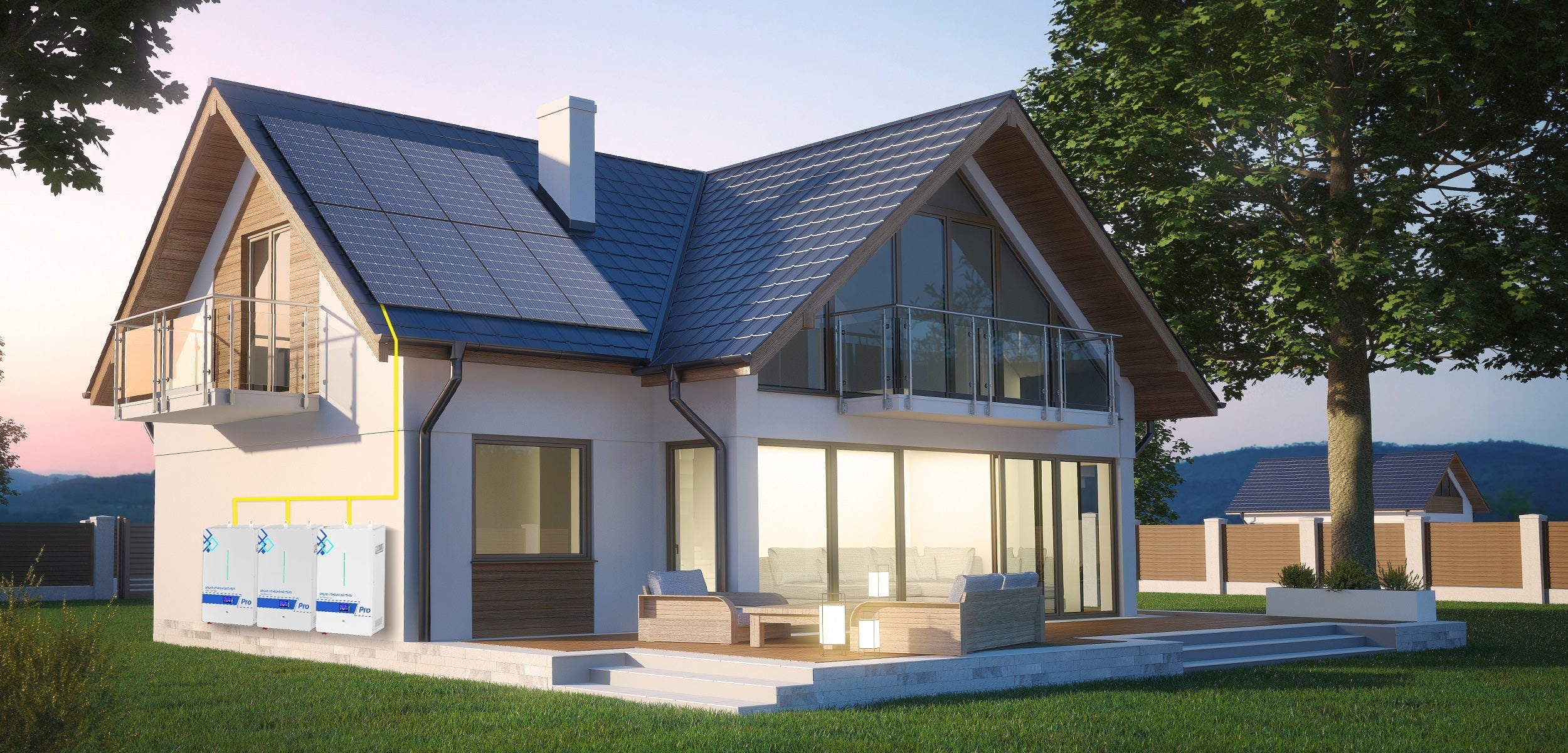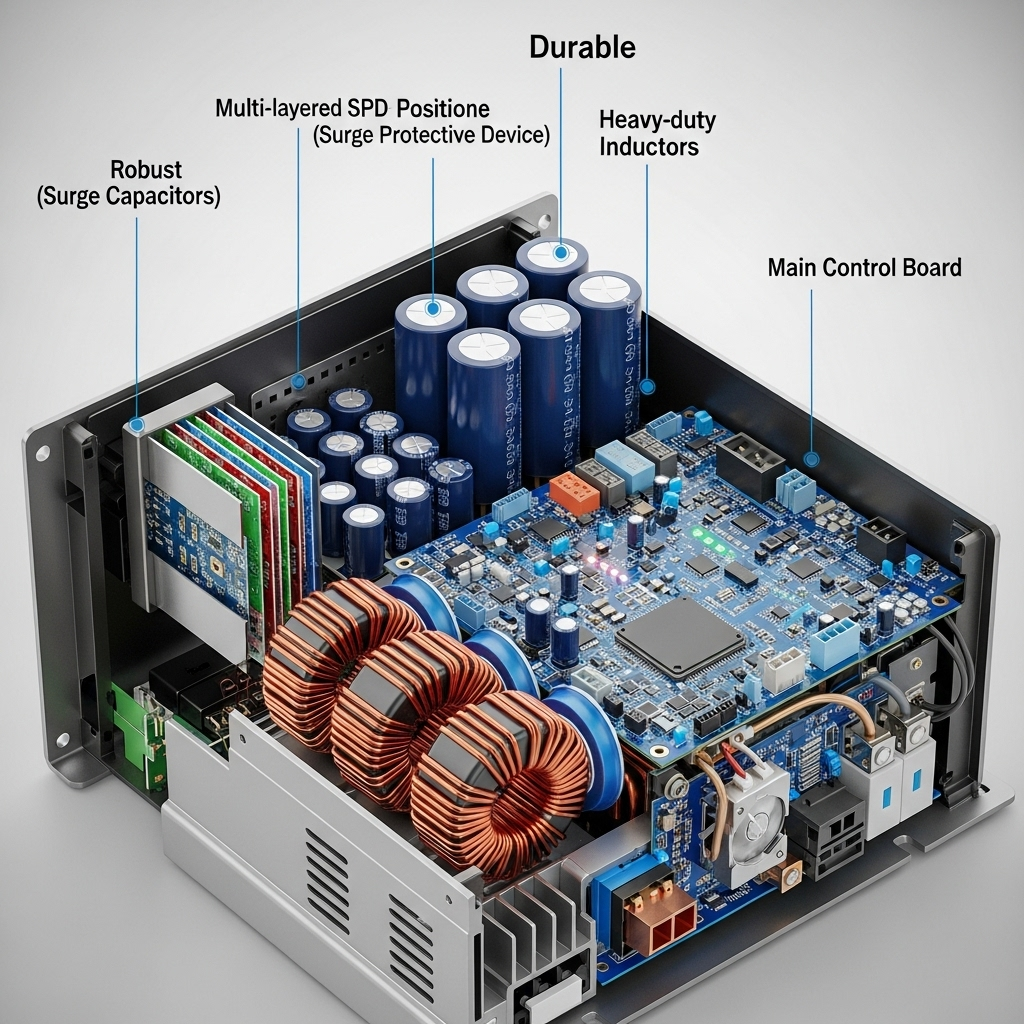Choosing the right inverter is fundamental to the performance and reliability of a solar energy system. The decision often comes down to two primary architectures: transformer-based and transformerless inverters. While both convert DC electricity from solar panels to usable AC power, their internal designs create significant differences in efficiency, power quality, and resilience. Understanding these distinctions is key to optimizing your energy independence.
Understanding the Core Difference: The Role of the Transformer
The presence or absence of a large, low-frequency transformer is the defining feature that separates these two inverter types. This single component has wide-ranging implications for the device's size, weight, performance, and cost.
Transformer-Based Inverters: The Traditional Approach
Transformer-based inverters, also known as conventional inverters, incorporate a large iron-core transformer to step up the DC voltage before converting it to AC. This design provides galvanic isolation—a physical separation between the DC and AC circuits. This isolation offers a high degree of safety and can be beneficial for grounding certain types of solar arrays. The transformer also inherently filters some electrical noise, contributing to a stable output. However, these benefits come at the cost of size, weight, and lower overall efficiency due to energy losses within the transformer itself.
Transformerless Inverters: The Modern Standard
Transformerless inverters utilize advanced power electronics and high-frequency switching to perform the DC-to-AC conversion without a bulky transformer. This approach results in a significantly lighter, more compact, and more efficient device. Instead of physical isolation, they rely on sophisticated digital controls and safety mechanisms, such as ground fault and residual current detectors, to ensure safe operation. The absence of the heavy transformer is a primary reason for their widespread adoption in residential and commercial solar installations. According to a report by the International Energy Agency on Solar PV Global Supply Chains, continuous improvements in manufacturing and cell design have pushed for more efficient components throughout the solar value chain, including inverters.

Efficiency Curves: Beyond Peak Performance
An inverter's efficiency rating directly impacts the amount of energy your solar system delivers. While manufacturers often highlight a 'peak efficiency' number, the real-world performance is better understood by examining the entire efficiency curve.
Why Peak Efficiency Can Be Misleading
Peak efficiency represents the inverter's performance under ideal laboratory conditions, at a specific power level. In reality, a solar array's output fluctuates throughout the day with changing sunlight intensity. Therefore, an inverter spends most of its time operating at partial load, not at its peak. An inverter that is highly efficient at 25% or 50% of its rated capacity will often produce more energy over time than one with a slightly higher peak efficiency but poor part-load performance. This is a critical factor in maximizing the return on your investment.
Comparing Efficiency Curves
Transformerless inverters generally exhibit a flatter and higher efficiency curve across a broad range of loads. Their electronic components are highly effective even at low power levels. Transformer-based inverters, due to energy losses in the transformer core, tend to be less efficient at lower loads. Analyzing real-world data is crucial for making an informed choice. As detailed in this ultimate reference on solar storage performance, understanding how efficiency curves affect overall system output is fundamental to proper system design.
| Feature | Transformerless Inverter | Transformer-Based Inverter |
|---|---|---|
| Peak Efficiency | ~97% - 99% | ~94% - 96% |
| Part-Load Efficiency | High across a wide range | Lower, especially at <25% load |
| Weight & Size | Light and compact | Heavy and bulky |
| Galvanic Isolation | No (uses electronic safety) | Yes (inherent in design) |
Power Quality: Total Harmonic Distortion (THD)
Power quality is a measure of how clean and stable the AC electricity from the inverter is. Total Harmonic Distortion (THD) is a key metric used to quantify this, representing the level of distortion in the AC waveform compared to a perfect sine wave.
What is THD and Why Does It Matter?
High THD can be problematic for sensitive electronics, causing them to malfunction or fail prematurely. It can also lead to overheating in wiring and create issues for the broader utility grid. Modern grid codes, as outlined in publications like IRENA's Grid Codes for Renewable Powered Systems, mandate low THD levels for inverters to ensure grid stability. For homeowners and businesses, low THD means reliable power for computers, appliances, and other valuable equipment.
THD in Transformer vs. Transformerless Inverters
Both modern inverter types are engineered to produce very low THD, typically below 3%. The transformer in a conventional inverter naturally helps to smooth the AC waveform and filter out some harmonic content. Transformerless inverters achieve low THD through sophisticated algorithms and high-quality electronic filters. For most applications, the difference in THD between high-quality models of either type is negligible, and both can deliver clean power suitable for all loads.
Surge Handling and System Robustness
Your energy system must be able to withstand voltage surges from lightning strikes or grid fluctuations. The inverter's ability to handle these events is crucial for long-term reliability.
The Role of Galvanic Isolation in Surge Protection
The physical separation provided by the transformer in a transformer-based inverter offers an inherent barrier to certain types of surges. It can prevent DC-side events from propagating to the AC side and vice-versa, adding a layer of protection. This is one reason they are sometimes favored in harsh industrial environments or areas with particularly unstable grids.
Surge Protection in Transformerless Inverters
Transformerless inverters compensate for the lack of a physical transformer with advanced, multi-layered protection systems. They integrate high-quality Surge Protective Devices (SPDs), sophisticated monitoring circuits that can detect anomalies in milliseconds, and rapid shutdown protocols. As noted in a U.S. Department of Energy success story on using renewable microgrids to keep the lights on, modern inverters, including grid-forming types, are essential for creating resilient power systems that can manage disturbances. When installed correctly with proper grounding, a high-quality transformerless inverter provides robust protection for the entire system.
Final Considerations
The choice between a transformerless and a transformer-based inverter depends on the specific needs of your project. For the majority of modern residential and commercial solar installations, the superior efficiency, smaller size, and lower cost of transformerless inverters make them the clear choice. Their high performance across all load levels translates directly into more harvested energy and greater financial returns. Transformer-based inverters remain a viable option for specific industrial applications or off-grid systems where their inherent robustness and galvanic isolation are required. Ultimately, focusing on a high-quality unit with a strong efficiency curve and certified safety features will ensure a reliable and productive heart for your solar energy system.
Frequently Asked Questions
Are transformerless inverters safe?
Yes. Modern transformerless inverters are designed and certified to meet stringent international safety standards. They incorporate multiple layers of electronic safety, including precise ground fault detection and rapid shutdown capabilities, to provide a level of safety equivalent to or exceeding that of traditional transformer-based units.
Does a transformer inverter always handle surges better?
Not necessarily. While the internal transformer provides a degree of inherent protection, a premium transformerless inverter equipped with properly rated, integrated Surge Protective Devices (SPDs) and installed with correct grounding techniques can offer excellent surge immunity. The overall system design is as important as the inverter type.
Is the efficiency difference significant in the real world?
Absolutely. An efficiency advantage of 2-3% might seem small, but over the 25-year lifespan of a solar power system, it results in a significant amount of extra energy generated. This directly translates to greater electricity bill savings and a faster payback period for your investment.





Leave a comment
All comments are moderated before being published.
This site is protected by hCaptcha and the hCaptcha Privacy Policy and Terms of Service apply.